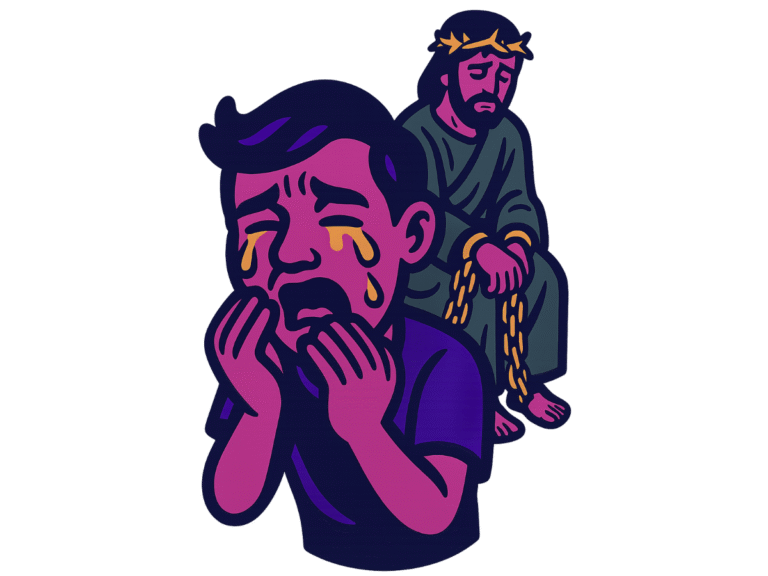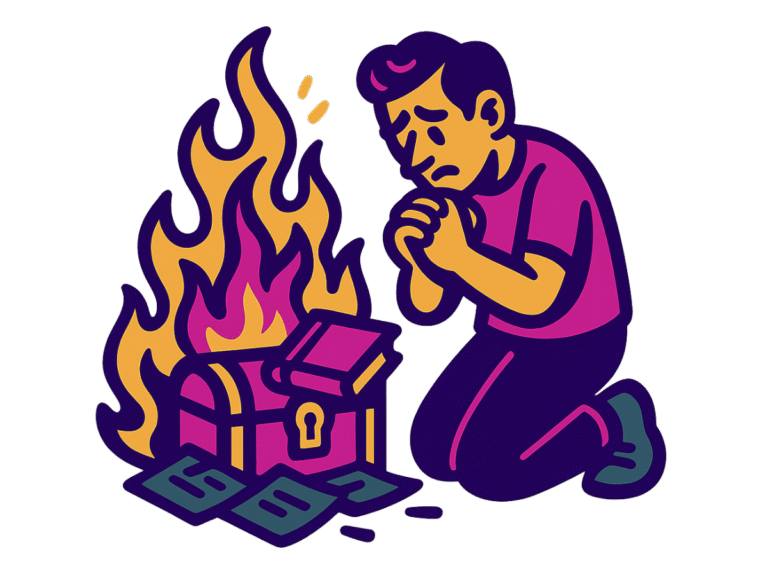For many, the scariest words Jesus ever spoke are:
“And cast the unprofitable servant into the outer darkness. There will be weeping and gnashing of teeth.”
Matthew 25:30
Most believers assume this refers to hell. But what if Jesus was describing something else—something believers themselves could experience at the Judgment Seat of Christ?
Is the “Outer Darkness” the same as the Lake of Fire?
Traditional interpretations equate “outer darkness” with the eternal destiny of unbelievers. But several observations challenge this view:
- In every parable where “outer darkness” is mentioned (Matthew 22:1–14; 24:36–51; 25:14–30), the people cast out are called servants—a term often used for believers.
- The setting is a banquet or wedding feast, symbolizing fellowship and reward, not final damnation.
- The Greek phrase is better rendered as “the darkness outside” (rather than “outermost darkness”), which fits the imagery of being shut out of a celebration rather than cast into hell.
Joseph Dillow explains it this way:
“We cannot arbitrarily dismiss the third slave as being ‘unsaved’ simply because we do not understand the cryptic, hard-to-understand expression ‘outer darkness.’” (Final Destiny, p. 790)
Jewish Wedding Imagery
To understand Jesus’ warning, it helps to see the cultural background of a first-century Jewish wedding.
- The bridegroom left his father’s house, went to the bride’s home, and paid a price (Christ’s incarnation and sacrifice).
- He returned to his father’s house to prepare a place (Christ’s ascension and promise of the New Jerusalem).
- At an unexpected hour, he came back for his bride (the Rapture).
- Then came a wedding feast (the Marriage Supper of the Lamb in Revelation 19:7–9).
If a guest arrived without the proper wedding garment (a life marked by righteousness), he would be cast outside—into the darkness beyond the banquet hall, missing the joy of the feast (cf. Matt. 22:11–13).
Thus, “the darkness outside” pictures a temporary exclusion from the joy of the kingdom banquet, not eternal condemnation.
The Parables That Warn Us
1. The Wedding Feast (Matthew 22:1–14)
One guest entered without the proper wedding garment. Since garments often symbolize righteous deeds (Rev. 19:8), this suggests a believer who failed to prepare for Christ’s return. His exclusion was not from salvation, but from full participation in the kingdom celebration.
2. The Talents and the Minas (Matthew 25:14–30; Luke 19:12–27)
Here, a servant fails to use what his master entrusted to him. He isn’t condemned as an outsider—he is called a “wicked and lazy servant.” His failure results in his work being stripped away and in his being cast into the darkness outside.
As Dillow explains:
“The Christian’s talents may be abilities and opportunities God gave… the minas represent diligence to use the gifts they received.” (Final Destiny, p. 836–37)
3. The Wicked Servant (Matthew 24:36–51)
Another parable contrasts a faithful servant who lives expectantly with a wicked one who indulges himself, forgetting the Master’s return. The language of being “cut in pieces” and placed with the hypocrites is not literal but conveys severe discipline.
What About “Weeping and Gnashing of Teeth”?
The phrase can sound terrifying—like a picture of eternal torment. But in Jewish culture, it was a common idiom for deep anguish, grief, or regret.
As Hans-Joachim Kraus notes in his commentary on the Psalms, Hebrew writers often used hyperbolic language to describe emotion—“rivers of water run down from my eyes” (Ps. 119:136) is not literal but vivid.
In the same way, “weeping and gnashing of teeth” refers to the immense sorrow of regret—believers realizing, too late, how much they squandered their calling.
Putting It Together
The “darkness outside” is not hell. It is a picture of loss of fellowship, joy, and reward for the unfaithful Christian. At the Judgment Seat of Christ, some may find themselves on the outside of the celebration—not as condemned sinners, but as grieving servants who squandered their chance to please their Master.
And yet, this exclusion is temporary. After the loss, the believer’s fellowship is restored, and eternity is still one of joy, comfort, and glory. As Paul reminds us, “he himself will be saved, but only as through fire” (1 Cor. 3:15).
Reflection Question
If Jesus returned tonight, would your life reflect a servant who is faithful and prepared—or one who risks being left in the darkness outside?
Next in the series: Part 4: Conclusion — Holding Together Grace, Accountability, and Eternal Joy
Sources
- Joseph Dillow, Final Destiny: The Future Reign of the Servant Kings (Conroe, TX: Grace Theology Press, 2013).
- Michael G. Huber, “The ‘Outer Darkness’ in Matthew and Its Relationship to Grace,” Journal of the Grace Evangelical Society 5:2 (Autumn 1992).
- Hans-Joachim Kraus, Psalms 1–59: A Continental Commentary (Minneapolis: Fortress Press, 1993).
- Samuel L. Hoyt, The Judgment Seat of Christ: A Biblical and Theological Study (Milwaukee: Grace Gospel Press, 2011).

